Thank you for joining us for the Design4Production 2024 event, read the summary of the key sessions covered at the event below. Today’s discussions highlighted the critical integration of design, engineering, and production to foster innovation and collaboration in the automotive industry. Esteemed speakers from Ford, NOYO AG, Volvo Group, Hyundai, among others, emphasised the importance of breaking down silos, enhancing sustainability, and speeding up development processes.
17:00: As we conclude, Pascal Nagel, editor-in-chief of Automobil Produktion, emphasised the industry’s commitment to breaking down silos. Christopher Ludwig, chief content officer at AMS, highlighted the importance of reducing development times, especially in China, where consumer trends influence the entire production process. For CDN’s James McLachlan, Hyundai’s Sven Wittke’s remark, “data is stupid,” resonated, underscoring human decision-making in data use.
Did you join us at Design4Production? Share your feedback via our social channels or with our editors. Until next time!
16:15: The closing session of the event, “Harmonising Design, Engineering, and Production,” convenes esteemed guests from NOYO AG, and Volvo Group to look into strategies for integrating these functions into a cohesive ecosystem to foster collaboration and optimise synergies throughout the development process.
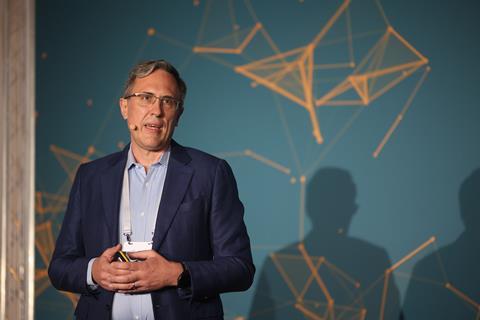
Dr. Daniel Kirchert, Founder and CEO, NOYO AG, says, “We are seeing a huge transformation and the rate of change is fast. I strongly believe that in order to really be successful, we need to be innovative.” He says it’s important to have a ‘nothing is impossible’ mentality, and not automatically kill off ideas. “To have the spirit of closeness between design, engineering and production.” Kirchert says that it’s critical for organisations “to risk failure.”
Gustavo Guerra,Vice President Strategic Product Planning, Volvo Group, says that the culture at Volvo is highly collaborative from the start. “I don’t think that anybody builds barriers or silos intentionally. I think what really happens, is that the complexity of a certain task, or the complexity of the organisation; the sheer size of it, can mean that it’s difficult to find the person you need to talk to, and it’s easier to just get going yourself, and so you start building the silos yourself.”
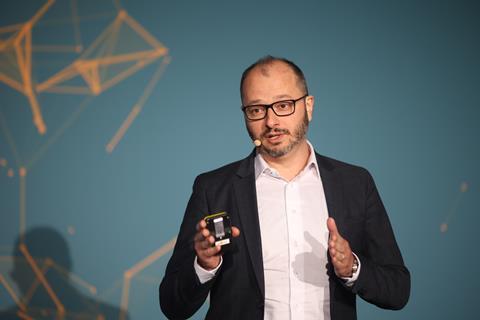
Guerra himself is in the habit of telling his team to, “spend some time on the internet, looking at the organisational chart to see who is who, and which function is taking care of what.” He says, “we are a flat organisation, so you can reach out to anybody to ask a question. That alone, helps with change and collaboration.”
We all feel that production and design are relatively fast in getting innovation into market at speed. But on the sustainability question, Guerra says, “I have a nine year old daughter, and I want her to have a future. And I’m sure that it’s the same for all of you who are parents.
“But it will not happen if we continue to live our lives like we are living today.” Guerra says, “we need to keep sight of that kind of transformation, when we talk about speed. We need to apply speed to the right things.” The collaborative process between production, engineering and design, and the proximity of their activities, is more than likely one of these aspects which requires this kind of speed.
Kirchert adds, “people seem to forget that when it comes to EVs, it is in fact such a meaningful goal to decarbonise transportation. And I think this is such a top-down target that every manufacturer should set themselves.” Kirchert gives an anecdote from a few years ago, where an OEM leader said, “let’s wait a few years for battery prices to come down.” Kirchert says, “this moves you to a follower role! You need to be in a leadership role and try to be competitive!” He believes that with the rise of Chinese EVs, European OEMs are going to have to reinvent themselves.
15:30: The “Strategy – realising design ambitions” session is all about the collaboration among car designers, engineers and manufacturing specialists in realising designs from conception to production. Positioned at the intersection of design and engineering, studio and design engineers serve as champions of creative vision while also ensuring that feasibility matches ambition.

Sven Wittke, Group Manager, Design Studio Engineering at European Design Center, Hyundai Motor Europe Technical Center, says that speed in development is becoming increasingly important. As engineers, designers and automotive lovers, we all like fast cars, and this translates into our processes. “But then,” he says, “the question is how we bring this speed into production. This is our task as engineers. To support it with our tools, and our passion for engineering and design.”
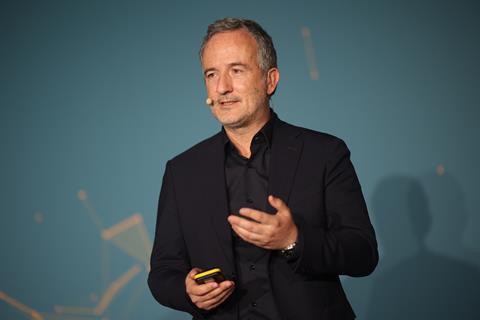
Joaquin Garcia, Head of Design, Italdesign, with key roles at Renault, Ford, Skoda, Seat, and NIO, says, “to build on what Sven said, I believe that speed is linked to decision-making, as well. We are a service company so speed is in our DNA. But, having a clear vision about what you want to do is important.” Garcia reiterates an earlier point about the value of ‘excessive use of quality.’
14:30: This session, “Designing and engineering inclusive and accessible mobility solutions to support the transition to EVs,” takes up a seemingly niche, yet important aspect of vehicle production: accessible and inclusive EVs for a large segment.
With the World Health Organisation (WHO), estimating just last year, that there are more than 65 million wheelchair users worldwide, and almost 15 percent, or 1 billion people, are dealing with a disability, the production and design of these vehicles is crucial.
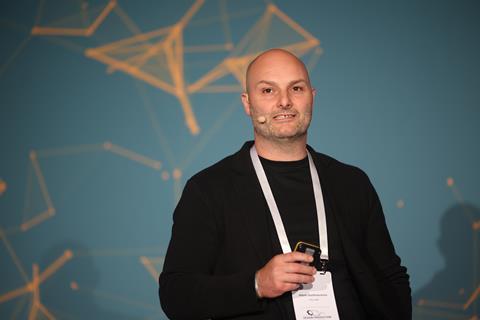
Adam Donfrancesco, Engineering director, Callum, says that one of the main focal points to achieve the production of the eVita - its fully electric inclusive vehicle, is the battery, and production and design considerations around battery implementation into the vehicle and architecture.
James Horne, Head of Accessible Vehicles, Motability Operations, asks, “can we make eVita? Is the feature set possible in another OEMs vehicle? Something that’s a wheelchair accessible vehicle, out of the factory, rather than a converted vehicle which has lots of benefits, but some obvious drawbacks?”
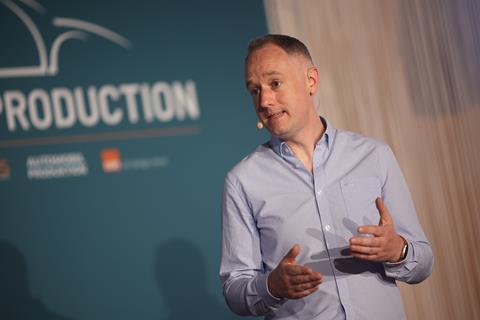
Horne points out that 13% of all new UK vehicles are funded by Motability. He says, “we think the pure play volume is 40,000 excluding China. If you look at China’s volume and their pace of electrification, that could double.”
Donfrancesco adds, like any of these things, whether it’s an accessories department or more fundamental change to the vehicle, it has to happen early in the vehicle development plan.
12:20: Markus Hein, Senior Site General Manager, Valeo, takes the stage in our “simplify production to scale up production” session. Complexities in manufacturing have the effect of slowing down and hindering production on a mass scale. Heine points to the importance of standardisation in achieving cost-efficiency, process effectiveness and quality control.
But all the while that standardisations are being achieved, he says, “on the other side, you have to achieve innovations.”
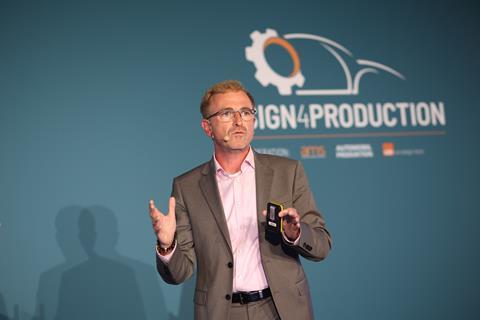
It can be a delicate balance to strike. He also underlines the importance of collaborative teamwork, both within the organisation (between the disciplines of production and design), and across borders, “including with the customer base, and equipment manufacturers.” It’s clear that close exchanges and collaborations are critical.
But with all this in mind, Hein says, “employees are the most important part of the whole story and journey.” Aspects of production are driven by demand. He adds, “standards are developing over time. If you look at Lidar technology, for which we are in the third generation of production and development, the customer has certain, specific requirements.”
Production variations need to adapt to regional and customer bases. For Valeo, for example, two different versions have been manufactured to cater to different needs. Hein says that his company has a global network of production sites, and its philosophy is ‘local for local’. “We have a big production site in Mexico addressing the American market, as well as a large production site in China addressing Asia, and to a certain extent, it’s a part of customer demand that they want the production sites in closer proximity to them.”
Asked about breaking down the silos between production, design and other departments, Heine says it’s easier to achieve this in smaller companies. Simply put, “the larger the company, the more silos you have.” A collaborative approach is needed, and when it comes to problem-solving, a good exchange is required to produce good results. Heine sees that such convergences are about constantly promoting this problem-solving.
11:30: The automotive production and design worlds know the importance of sustainability efforts being ‘baked-in’ throughout production and design from the beginning. This session on ”creating eco-friendly vehicles” explores what key players are doing to bring this about.
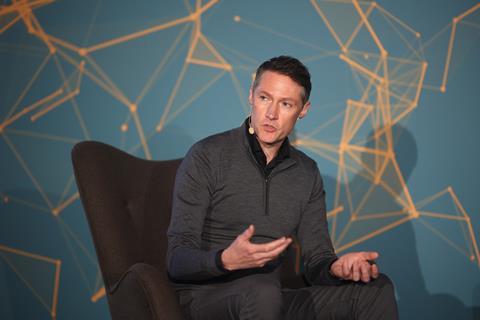
David Mason, Design Operations Director, Nissan Design, Europe, says, “as we put more recycled content or natural materials into, say, plastics, this impacts durability. And of course, this impacts demand, negatively. Only about 50% of customers are willing to pay for this.” He points to the important role that parts reduction plays in the effort, as well as to the importance of setting clear sustainability goals across departments.
“When you set metrics as targets at the beginning of the project, you have a greater chance of success. Including through a number of different departments, converging and collaborating on a very clear goal, while also understanding the current state of play.”
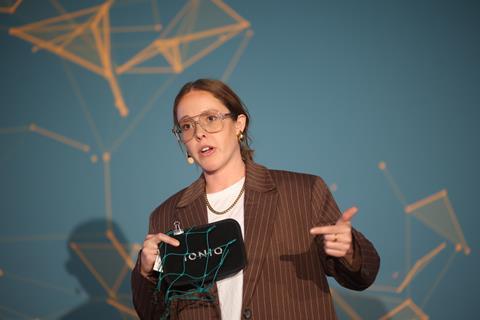
Emilie Grimm, Colour and Trim Designer, Hyundai Motor Europe speaks on the importance of producing with lifecycles in mind, saying, “I think that if we had design for disassembly from the outset, we would be on a different level, but also think that it is a very complex situation, and that whatever the goal is, it needs to be embedded into the company strategy.”
Amko Leenarts, Design Director, Ford of Europe, agrees, saying “we called that strategy at Ford, ‘The Road to Better’, and it is all-encompassing. It’s about the way that we conceive vehicles; the way that we do our responsible sourcing with suppliers. ‘The better world’ is a better and broader topic from that point of view, especially when you talk about battery production.”
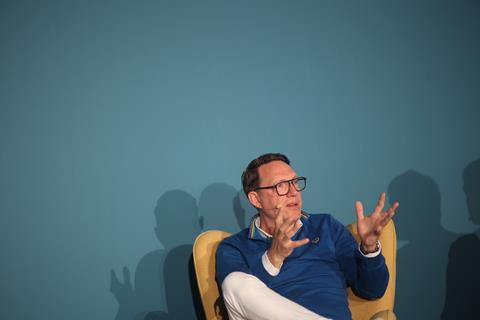
And the silos between production and design are now finally breaking down. He adds, “I have never had as many conversations with manufacturing as I am having now.” Ford has always had good conversations with engineers, he says, “but now I’m dealing with the manufacturers straight away, and directly to really get to the bottom of what is possible and how we can be more responsible about production and design.” He says that Ford design teams take learnings from production, allowing the OEM “to take things to the next step.
“It begins,” he says, “with a lot of respect and curiosity between design and production,” and reiterates that great things can be achieved by breaking down these silos.
Leenarts says, large OEMs, especially, have a huge sustainability responsibility due to the sheer scale of their production, and emphasises that it requires a lot more innovation to take it to the next level. But on the other side of the green coin, he adds,“we do have some doubts though, because it simply costs a lot of money.” He points out that some feel there is no real business case behind sustainability and eco-friendly vehicles, which can present a difficulty. However, cost reductions can be made, through the simple reduction of parts. Mason says that there is a balance that needs to be struck. Brand distinctiveness rests on “some level of parts,” and the philosophy of parts reduction can be a good thing, pointing to Tesla and its gigacasting efforts which eliminated many challenges from CO2 footprints to logistics and supply chain issues.

Jesse Paegle, Automotive Steel Solution Director, ArcelorMittal, says “the transition we have in front of us is a critical one. The less material we use in production, the greener our vehicles will be. This approach, alongside increased recyclability, will always be a good approach.” Paegle points specifically to “modularity, simplification, reduction of complexity, skateboard platforms,” and so on, as important aspects of production that will give great sustainability impacts as well as lightweighting effects.
He says, “using multipart integration, we can effectively reduce 50% in CO2 footprint, the major part of which comes from material choice and use. For us, the second part is about decarbonisation in our processes, through things like the use of electrical furnaces in production.” Paegle adds that manufacturing inside of the bodyshop is also key to achieving eco-friendly vehicles.
9:00: The opening session starts off with a conversation between Klaus Zyciora, Vice-President, Global Design, Changan, and Martin Uhlarik, Vice President of Global Design, Tata Motors along with CDN editor, James McLachlan, on the theme of “breaking down silos.” A key takeaway is that communication is vital – helping each side to understand the shared goals on the table.
Zyciora says the old game of the engineer telling the designer that something doesn’t look so great, is no longer the case. The process between engineering and design is now much more “co-creational.”
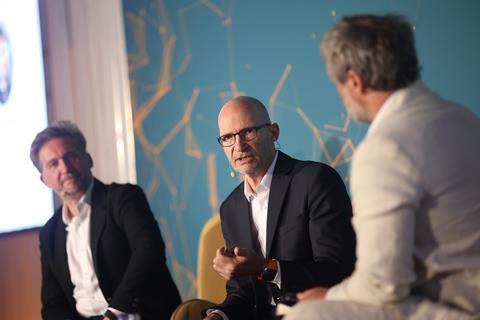
He points out that the transformation from Internal Combustion Engines to Electric Vehicles “is stumbling, and this is a bad thing.” But, since the battery is the most costly part of EVs, successful battery production and recyclability will play a key role in the EV shift. Zyciora says that key production areas such as gigacasting will confer an advantage.
Martin Uhlarik, Vice President of Global Design, Tata Motors points out that design and engineering teams have to work “in a circular” way.
Thrown open to the audience, an attendee from Callum cars highlights, “it’s great to hear from engineers as well as designers,” adding, “I want engineers to want beautiful cars, and designers to want functional cars,” capturing the spirit of Design4Production.
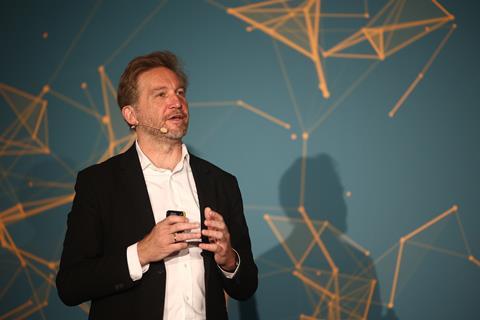
Another audience member from Hyundai India, asked a question concerning sustainability. “In India, we have both ICE and EVs. But generally, ICE is always engineered and designed first, and then adapted for EVs. How do you see this going forward?”
Uhlarik calls these ‘conversions.’ “But that was in-between generations,” he says, so that now, engineering and design are focused directly on EVs so that they are no longer derivatives of original ICEs, but are beginning to come into their own. “The scales are tipping,” says Uhlarik, “even faster than the market expects. Going forward, you will see EVs become the dominant powertrain.”
08:50: Kicking things off CDN editor James McLachlan, Automobil Produktion editor-in-chief Pascal Nagel, and Ultima Media’s chief content officer Christopher Ludwig were at the helm. They outlined their goal to examine the increasingly collaborative efforts between traditionally distinct design and engineering divisions, which are now working more closely to enhance product quality and streamline production.
14 May
There is just one day to go until the first ever Design4Production conference begins!
AMS is helping to launch the event in cooperation with sister sites Car Design News and Automobil Produktion at a time when the automotive industry is currently undergoing an unprecedented transformation, driven by advancements in electrification, sustainability, digitalisation and swiftly evolving consumer demands.
Navigating these changes requires collaboration, resilience and an unwavering commitment to innovation, and we will be hearing from a range of automotive experts and bringing you their advice on strategy, sustainability, co-creative collaboration and next-gen battery architectures.
Speakers, including global leaders from Audi, Ford, Hyundai Motor Europe, Nissan, Tata Motors, Volvo Group and more, will be discussing how they are exploring transformative strategies and advancements shaping the future of vehicle design, development and manufacturing, including across product development, prototypes, materials and vehicle architectures.
Explore the future of automotive design and manufacturing at Design4Production in Munich on 15 May and join leading designers, engineers and production leaders on Automotive design and manufacturing experts as they discuss how to accelerate innovation, efficiency and sustainability.
Topics
- Additive/3D Printing
- Automation
- Automation and Digitalisation
- Design for Manufacturing
- Digital Twin
- Digitalisation
- Electrification
- Europe
- EV manufacturing
- Expansion
- Factory expansion
- Factory Investment
- Factory Transformation
- Ford
- Industry 4 and Smart Factory
- Lean manufacturing
- Machining
- Manufacturing engineering
- Nissan
- OEMs
- OEMs
- Operational Excellence
- Powertrain
- Process Improvement
- Robotics
- Smart Factory
- Sustainable production
- Systems
- Tata
- Toyota
- Virtual reality
- Volvo Cars
- VR and AR Systems






























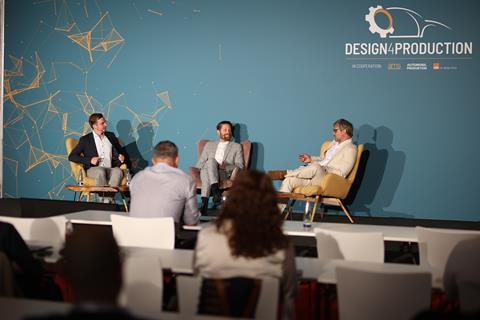
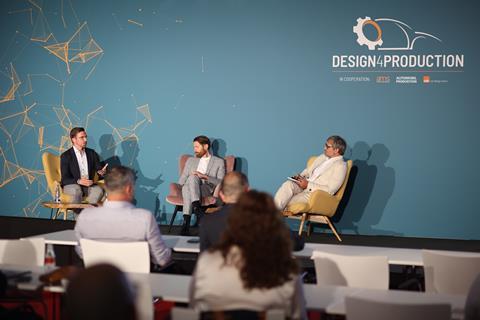
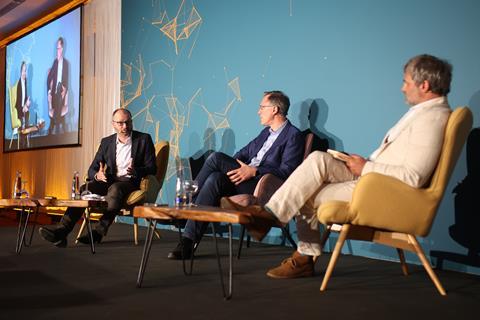

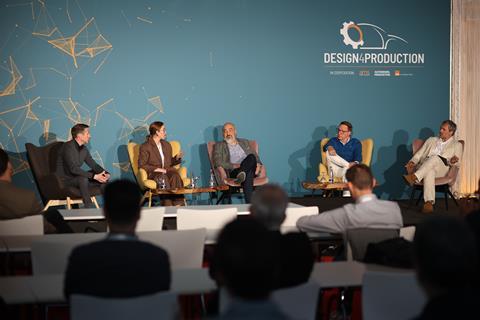
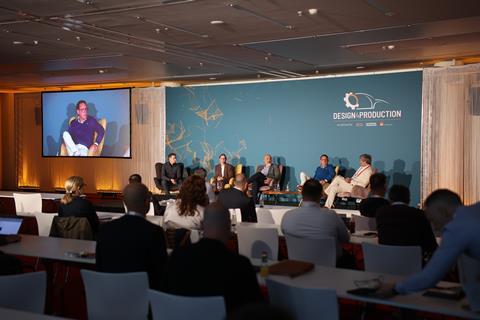
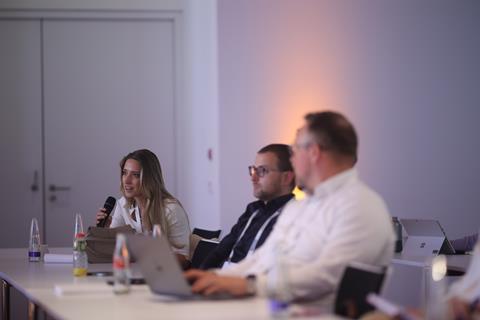
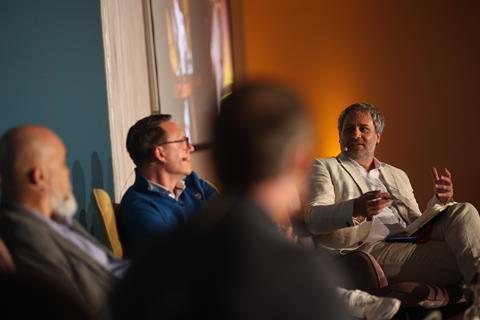
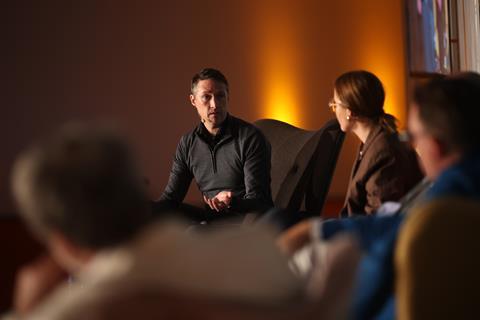

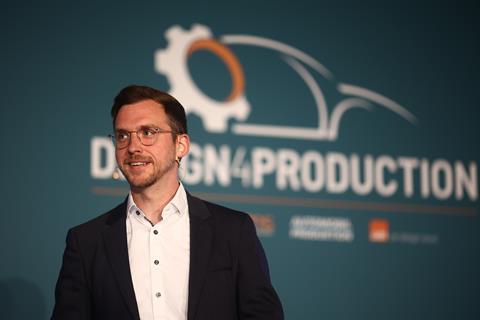
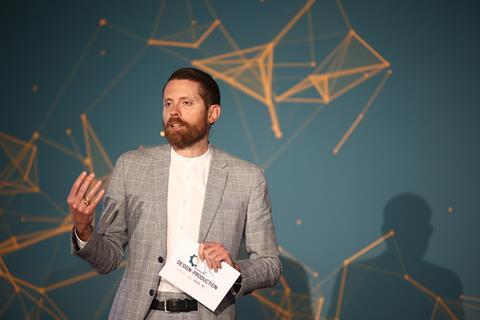
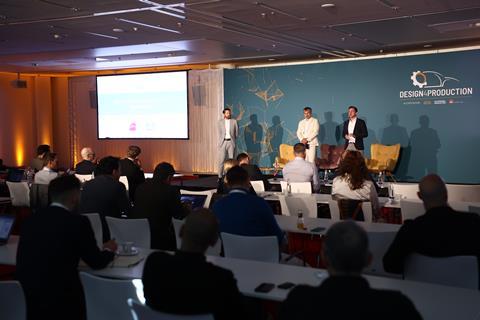



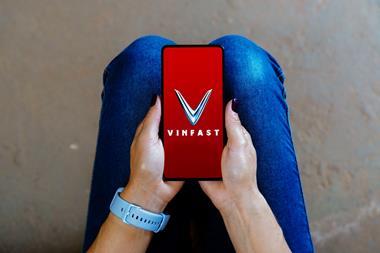
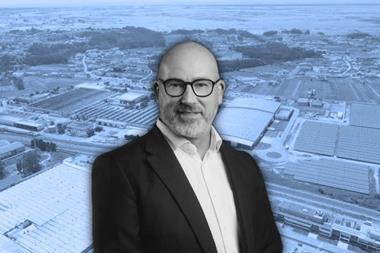
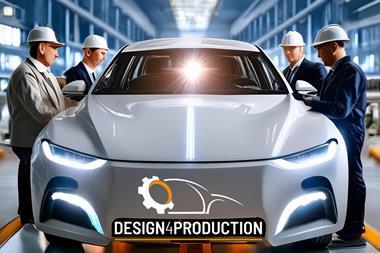


No comments yet